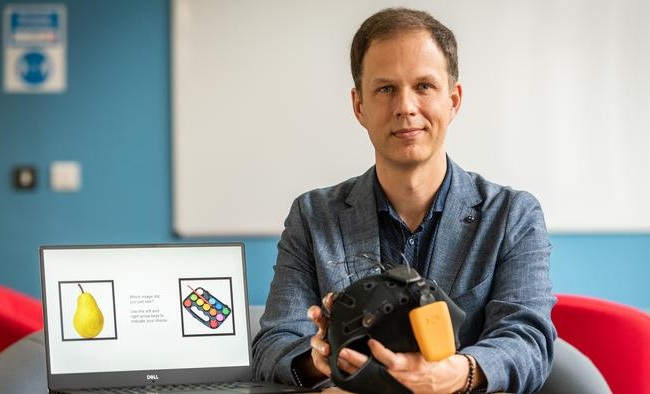Shortage of Glass Vials Could Delay Rollout of COVID-19 Vaccine
|
By HospiMedica International staff writers Posted on 29 Jun 2020 |

Image: A transmission electron microscope image of SARS-CoV-2 (Photo courtesy of NIAID)
Even as scientists around the world are racing against time race to develop a vaccine for the coronavirus, experts have warned that the distribution of a COVID-19 vaccine could be delayed by a global shortage of glass vials.
In a report by The Jerusalem Post, Dr. Rick Bright, who was fired as head of the US Biomedical Advanced Research and Development Authority (BARDA) earlier this year, has warned that it could take up to two years to produce enough vials to meet the vaccine needs of the US population alone. Currently, there are 100 potential vaccines under development and 11 candidates have progressed to human trials, with a vaccine expected to receive approval by September this year. Given the worsening spread of the pandemic, millions of doses will have to be manufactured in advance in order to provide maximum and early access to the vaccine globally.
However, in a whistleblower complaint, Dr. Bright discussed with officials "his growing alarm about the shortage of syringes, needles and vials necessary to administer vaccines if and when one became available," according to The Jerusalem Post. Bright had "raised concerns about a global shortage of glass vials that are required for vaccine production. According to major glass producers, all major pharmaceutical tubing suppliers are sold out of borosilicate tubing. It could take up to two years to produce enough vials for US vaccine needs, while some therapeutics will also require vials."
Similarly, Sir John Bell, Regius Professor of Medicine at the University of Oxford who is part of the Oxford Vaccine Group which has begun human trials of a vaccine, told listeners of BBC Radio 4's flagship 'Today' program: "There's only 200 million vials left in the world now because they've all been sucked up by various people who can anticipate a vaccine."
Vial manufacturing is a specialized process as the glass must be capable of withstanding extreme temperature and transportation conditions. As a result, there are only a few vial producers in the market. Additionally, the 'pack-and-fill' process of filling the vials with the vaccine is time consuming as each unit has to be manually checked for quality control, resulting in supply delays. Vial manufacturers are developing new methods to conserve glass, such as placing the vaccine inside larger vials which can hold up to 20 doses, thereby reducing the time-frame for pack-and-fill. For instance, Johnson & Johnson hopes to meet its ambitious target of supplying more than one billion vaccine doses globally by fitting five doses of a vaccine inside a single vial and save glass.
In a report by The Jerusalem Post, Dr. Rick Bright, who was fired as head of the US Biomedical Advanced Research and Development Authority (BARDA) earlier this year, has warned that it could take up to two years to produce enough vials to meet the vaccine needs of the US population alone. Currently, there are 100 potential vaccines under development and 11 candidates have progressed to human trials, with a vaccine expected to receive approval by September this year. Given the worsening spread of the pandemic, millions of doses will have to be manufactured in advance in order to provide maximum and early access to the vaccine globally.
However, in a whistleblower complaint, Dr. Bright discussed with officials "his growing alarm about the shortage of syringes, needles and vials necessary to administer vaccines if and when one became available," according to The Jerusalem Post. Bright had "raised concerns about a global shortage of glass vials that are required for vaccine production. According to major glass producers, all major pharmaceutical tubing suppliers are sold out of borosilicate tubing. It could take up to two years to produce enough vials for US vaccine needs, while some therapeutics will also require vials."
Similarly, Sir John Bell, Regius Professor of Medicine at the University of Oxford who is part of the Oxford Vaccine Group which has begun human trials of a vaccine, told listeners of BBC Radio 4's flagship 'Today' program: "There's only 200 million vials left in the world now because they've all been sucked up by various people who can anticipate a vaccine."
Vial manufacturing is a specialized process as the glass must be capable of withstanding extreme temperature and transportation conditions. As a result, there are only a few vial producers in the market. Additionally, the 'pack-and-fill' process of filling the vials with the vaccine is time consuming as each unit has to be manually checked for quality control, resulting in supply delays. Vial manufacturers are developing new methods to conserve glass, such as placing the vaccine inside larger vials which can hold up to 20 doses, thereby reducing the time-frame for pack-and-fill. For instance, Johnson & Johnson hopes to meet its ambitious target of supplying more than one billion vaccine doses globally by fitting five doses of a vaccine inside a single vial and save glass.
Latest COVID-19 News
- Low-Cost System Detects SARS-CoV-2 Virus in Hospital Air Using High-Tech Bubbles
- World's First Inhalable COVID-19 Vaccine Approved in China
- COVID-19 Vaccine Patch Fights SARS-CoV-2 Variants Better than Needles
- Blood Viscosity Testing Can Predict Risk of Death in Hospitalized COVID-19 Patients
- ‘Covid Computer’ Uses AI to Detect COVID-19 from Chest CT Scans
- MRI Lung-Imaging Technique Shows Cause of Long-COVID Symptoms
- Chest CT Scans of COVID-19 Patients Could Help Distinguish Between SARS-CoV-2 Variants
- Specialized MRI Detects Lung Abnormalities in Non-Hospitalized Long COVID Patients
- AI Algorithm Identifies Hospitalized Patients at Highest Risk of Dying From COVID-19
- Sweat Sensor Detects Key Biomarkers That Provide Early Warning of COVID-19 and Flu
- Study Assesses Impact of COVID-19 on Ventilation/Perfusion Scintigraphy
- CT Imaging Study Finds Vaccination Reduces Risk of COVID-19 Associated Pulmonary Embolism
- Third Day in Hospital a ‘Tipping Point’ in Severity of COVID-19 Pneumonia
- Longer Interval Between COVID-19 Vaccines Generates Up to Nine Times as Many Antibodies
- AI Model for Monitoring COVID-19 Predicts Mortality Within First 30 Days of Admission
- AI Predicts COVID Prognosis at Near-Expert Level Based Off CT Scans
Channels
Critical Care
view channel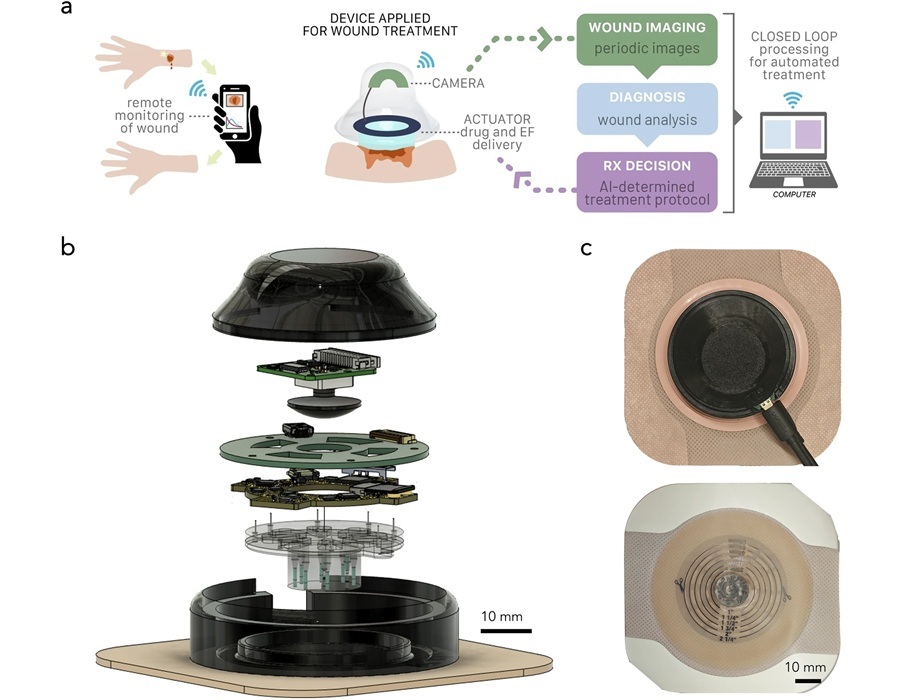
Wearable ‘Microscope in a Bandage’ Fastens Wound Healing
Wound healing is a complex biological process that moves through stages, including clotting, immune response, scabbing, and scarring. For many patients, especially those in remote areas or with limited... Read more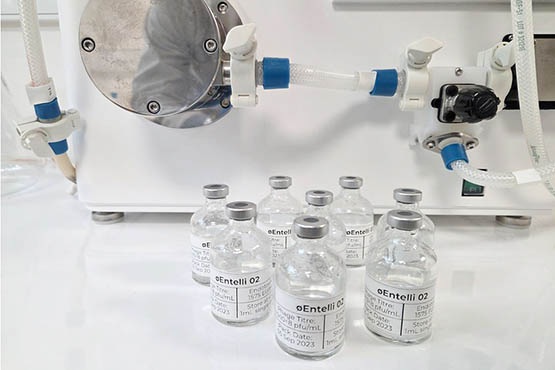
Virus Cocktail to Combat Superbugs Offers New Precision Medicine Approach for Hospitals Battling AMR
Antimicrobial resistance is one of the most pressing challenges in modern medicine, making once-treatable infections increasingly lethal. Enterobacter infections, for example, are difficult to treat and... Read moreSurgical Techniques
view channel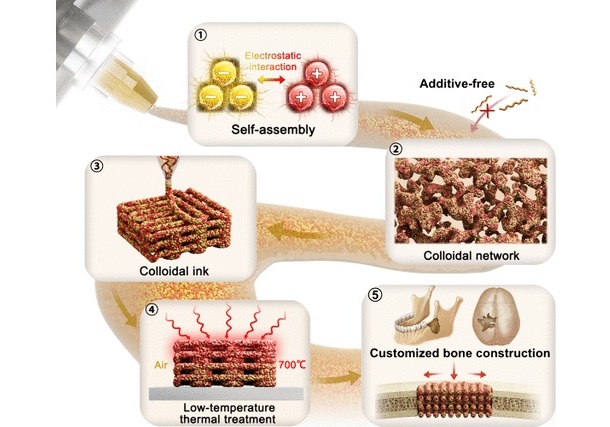
3D Printable Bio-Active Glass Could Serve as Bone Replacement Material
Glass may not seem like a natural choice for replacing bone, yet the two materials share surprising similarities in structure and strength. Bone and glass both bear weight more effectively than they withstand... Read more
Micro Imaging Device Paired with Endoscope Spots Cancers at Earlier Stage
Digestive system cancers are among the most common cancers, with hundreds of thousands of new cases and deaths reported annually in the United States. Standard endoscopy, the main diagnostic method for... Read more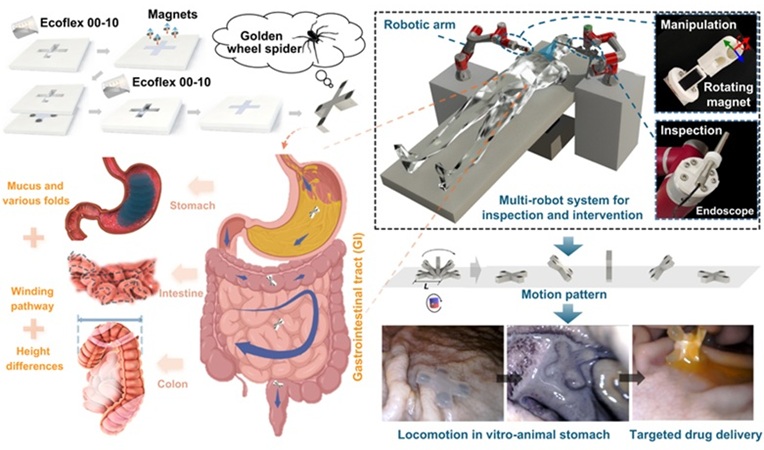
Spider-Inspired Magnetic Soft Robots to Perform Minimally Invasive GI Tract Procedures
The gastrointestinal (GI) tract is vital for digestion, nutrient absorption, and waste elimination, but it is also prone to cancers and other serious conditions. Standard endoscopy is widely used for diagnosis... Read morePatient Care
view channel
Revolutionary Automatic IV-Line Flushing Device to Enhance Infusion Care
More than 80% of in-hospital patients receive intravenous (IV) therapy. Every dose of IV medicine delivered in a small volume (<250 mL) infusion bag should be followed by subsequent flushing to ensure... Read more
VR Training Tool Combats Contamination of Portable Medical Equipment
Healthcare-associated infections (HAIs) impact one in every 31 patients, cause nearly 100,000 deaths each year, and cost USD 28.4 billion in direct medical expenses. Notably, up to 75% of these infections... Read more
Portable Biosensor Platform to Reduce Hospital-Acquired Infections
Approximately 4 million patients in the European Union acquire healthcare-associated infections (HAIs) or nosocomial infections each year, with around 37,000 deaths directly resulting from these infections,... Read moreFirst-Of-Its-Kind Portable Germicidal Light Technology Disinfects High-Touch Clinical Surfaces in Seconds
Reducing healthcare-acquired infections (HAIs) remains a pressing issue within global healthcare systems. In the United States alone, 1.7 million patients contract HAIs annually, leading to approximately... Read moreHealth IT
view channel
Printable Molecule-Selective Nanoparticles Enable Mass Production of Wearable Biosensors
The future of medicine is likely to focus on the personalization of healthcare—understanding exactly what an individual requires and delivering the appropriate combination of nutrients, metabolites, and... Read moreBusiness
view channel
Philips and Masimo Partner to Advance Patient Monitoring Measurement Technologies
Royal Philips (Amsterdam, Netherlands) and Masimo (Irvine, California, USA) have renewed their multi-year strategic collaboration, combining Philips’ expertise in patient monitoring with Masimo’s noninvasive... Read more
B. Braun Acquires Digital Microsurgery Company True Digital Surgery
The high-end microsurgery market in neurosurgery, spine, and ENT is undergoing a significant transformation. Traditional analog microscopes are giving way to digital exoscopes, which provide improved visualization,... Read more
CMEF 2025 to Promote Holistic and High-Quality Development of Medical and Health Industry
The 92nd China International Medical Equipment Fair (CMEF 2025) Autumn Exhibition is scheduled to be held from September 26 to 29 at the China Import and Export Fair Complex (Canton Fair Complex) in Guangzhou.... Read more












